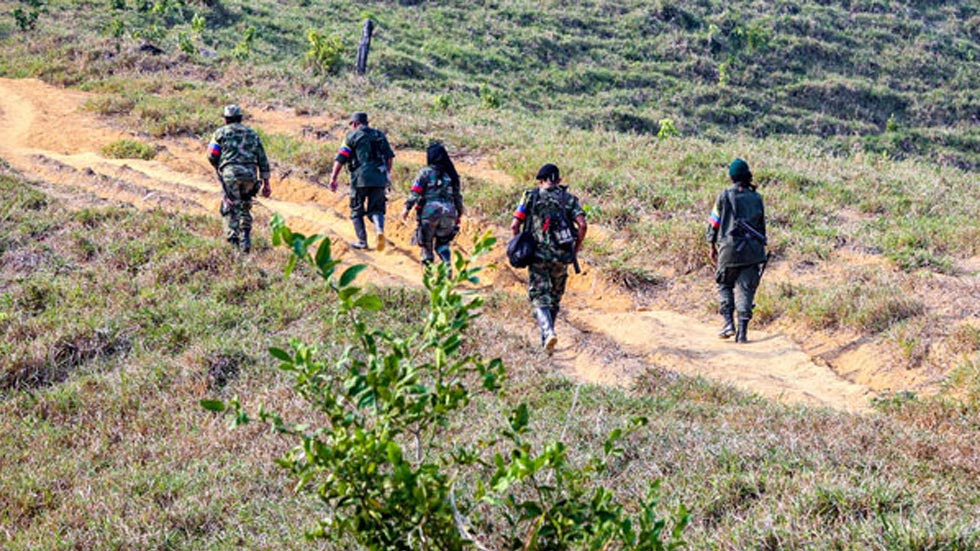The unexpected and premature demobilization of FARC guerrillas in northwest Colombia has surprised local authorities who are still preparing to assume control in the area and prevent a power vacuum, according to the local governor.
According to Antioquia governor Luis Perez, members of the FARC’s 18th Front have left their stronghold in the township of La Granja and are moving towards Santa Lucia, the township where the United Nations is setting up a concentration camp where guerrillas will demobilize and disarm.
Both townships lie in the Ituango municipality, which is of major strategic importance for drug trafficking and has been flagged as a post-demobilization risk area by independent observers.
Perez told press that the guerrillas have abandoned La Granja, leaving the township without any authority, with major public order issues and at risk of an incursion by other drug trafficking illegal armed groups like the neo-paramilitary Gaitanista Self-Defense Forces of Colombia.
Because of the chronic state abandonment, coca cultivation and the presence of rival drug trafficking groups, Ituango was flagged as one of the country’s risk areas that will require extra attention in order to prevent turf wars.
The risk areas for post-conflict Colombia
“For 40 or 50 years the FARC have been ‘the police,’ ‘justice’ and ‘inspectors’ in this territory. They controlled public order and even if there was a family dispute they were the ones resolving it,” Perez told press on Tuesday.
With the FARC gone and the military still waiting for permission to enter the area “La Granja practically is left without authority,” said Perez.
The governor in June announced the displacement of troops to the north of Antioquia where FARC guerrillas will be concentrated in four so-called demobilization areas where, under the supervision of the United Nations, they will surrender their weapons and be either reintegrated or surrendered to justice.
Military sends troops to north Colombia to demobilize 1200 FARC guerrillas
The problem is that the FARC is not supposed to be moving its troops towards these concentration camps until after the signing of a peace deal, expected shortly, and in coordination with the military that will then be responsible for assuming control in the hundreds of lawless areas controlled by the guerrillas.
Peace talks in depth: End of conflict
“For more than 30 years, no policeman, soldier or governor has been to this township” of La Granja, according to Perez, who said that this weekend a rapid response team of the authorities will enter La Granja “to take possession” of the township.
“The peace process, if we don’t control it, can slip through our fingers. Already there are FARC troops who are moving from one place to another without having begun the signing” of the peace deal, which would be a violation of the demobilization protocol that seeks a mass demobilization in coordination with the military, the UN and civilian authorities.
Colombia’s FARC rebels sign bilateral ceasefire, agree to demobilize within week after final deal
The FARC did not immediately respond to the allegations made by Perez and no irregular FARC movements were reported in other parts of the country.
The government of President Juan Manuel Santos has been negotiating peace with the FARC since the beginning of 2011.
As part of the agreement that is still being finalized, the guerrillas would abandon their weapons and take part in politics, ending an armed conflict of more than half a century that has cost the lives of more than 265,000 Colombians.


